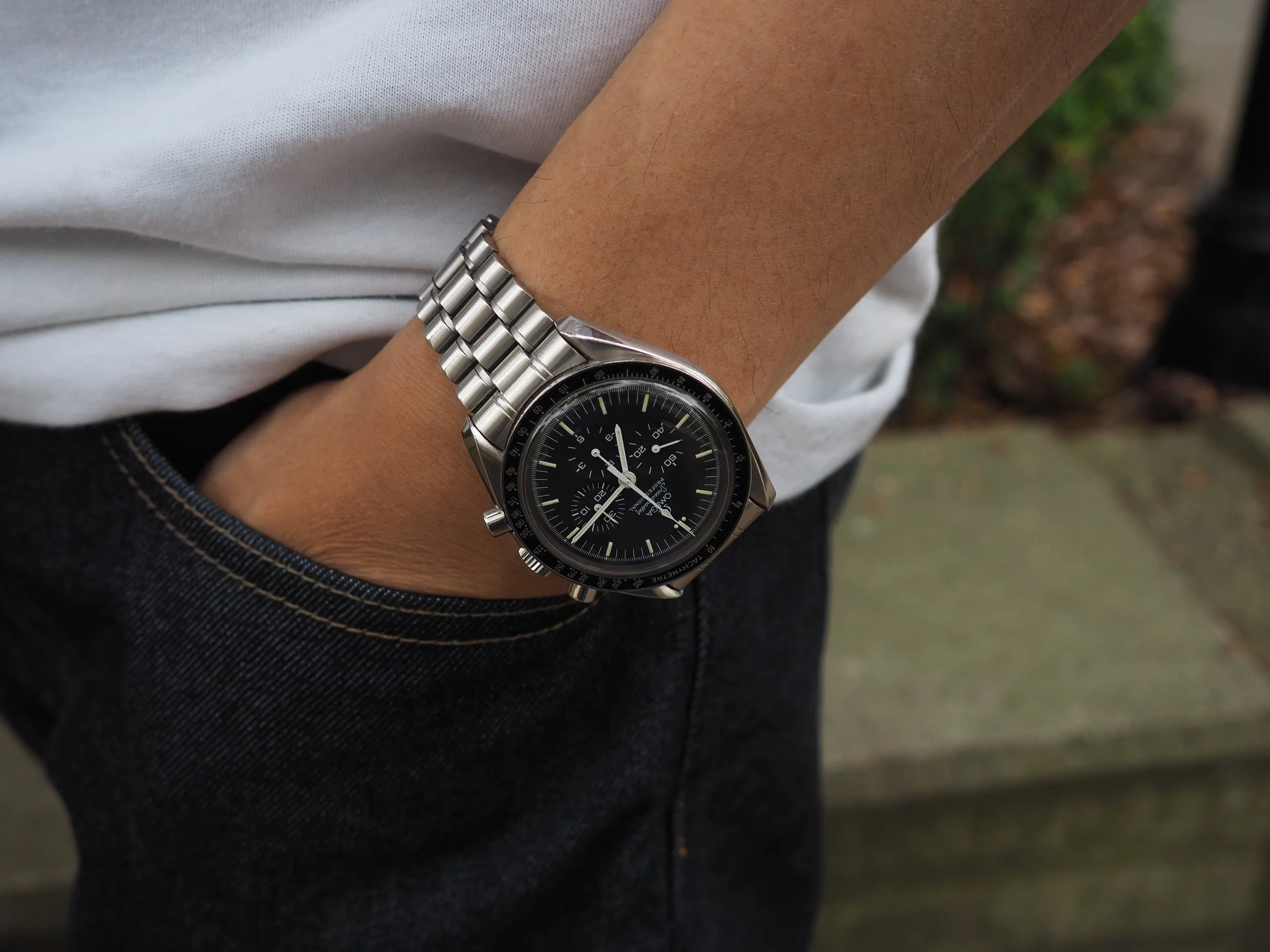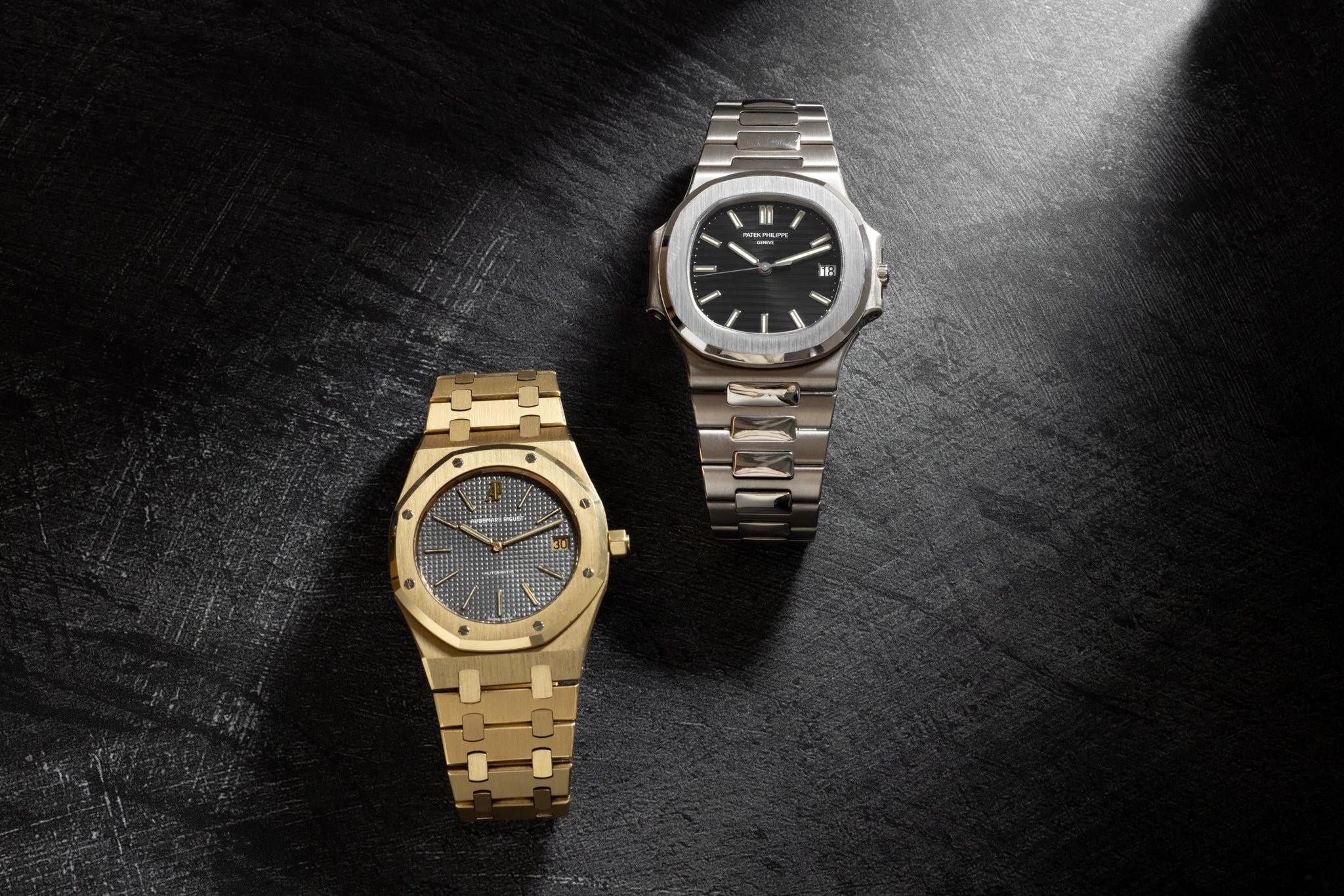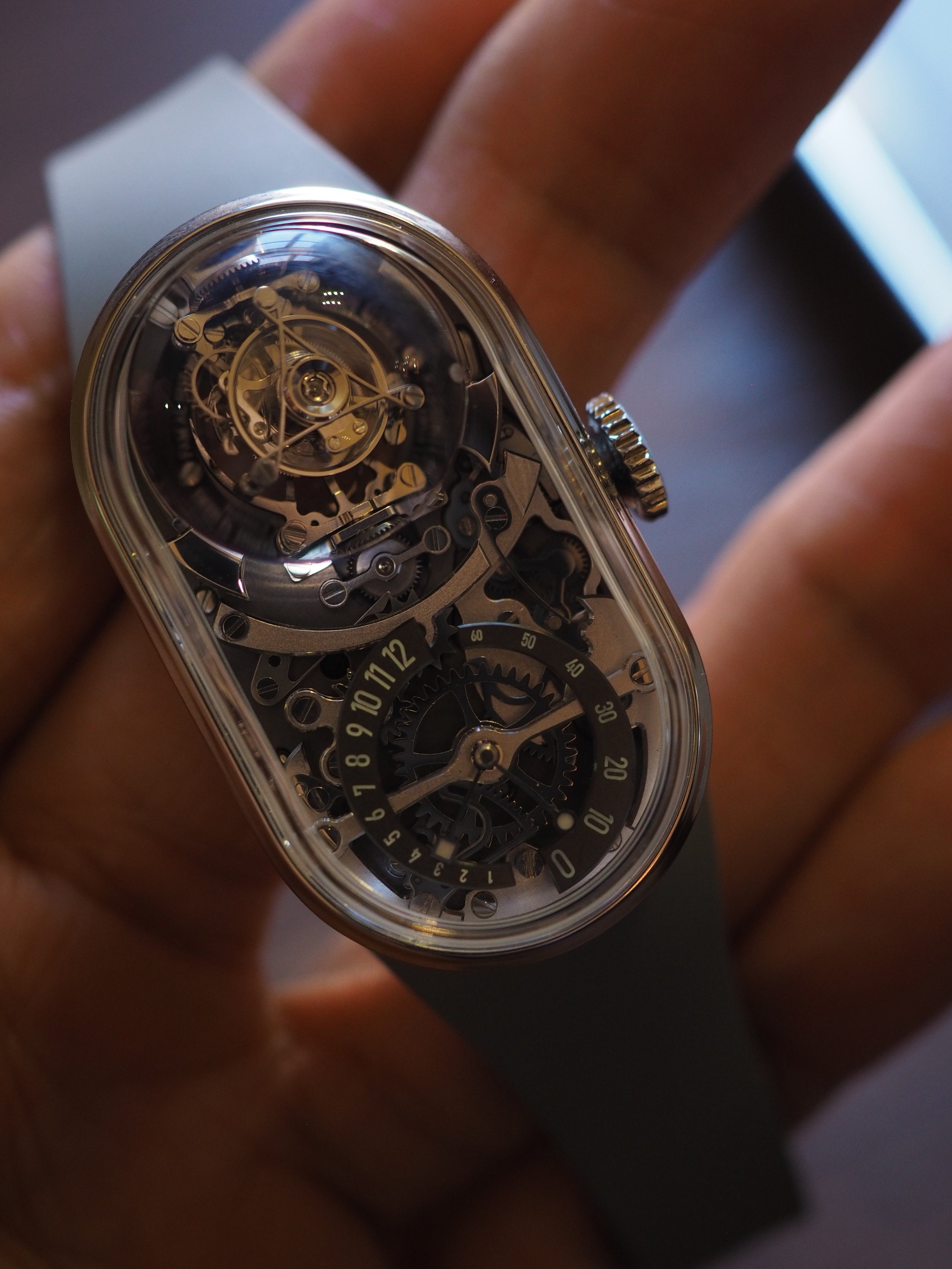Everything Is a Reference Now
Image: Gerald Genta Heritage Association
There is an old maxim in design that everything is a remix, but in watchmaking the remix has become the whole genre. We are no longer dealing with subtle influence or gentle nods to heritage. We have entered a full era of déjà vu, where almost every release feels like a familiar silhouette wearing a slightly different dial or bezel. Watches today are not simply inspired by their predecessors. They are direct descendants, the way a family lineage shows up in a jawline or profile. This is not necessarily a criticism, although it can be. It is an attempt to understand why the industry has drifted into a mode where nearly every design pulls from something older. Some of the reasons are commercial, some psychological, and some the result of a culture that has learned to value lineage above originality. And somewhere inside this spiral of reissues and reinterpretations lies a deeper story about what people now expect watches to be.
That shift began subtly. When Tudor revived the Ranger in 2014, the industry took note. Heritage became a safe commercial path. The watch succeeded precisely because it looked like something familiar from the 1960s, yet remained usable in 2014 without any irony. The industry learned a quick lesson. If the archives already contain designs people love, why gamble on something entirely new?
Over the next decade, heritage became a formula. Breitling rebuilt its identity by reaching backward. Longines transformed into a full-time reissue factory with surprisingly consistent results. Omega returned again and again to the late fifties and sixties as if those two decades held eternal truth. Even Rolex, which never calls anything a reissue, has spent the last several decades refining the same silhouettes until each version feels like the perfected form of an earlier idea.
Originality in watch design has not disappeared, even if much of the industry is focused on revisiting the past. Today, some of the most interesting work comes from watchmakers who are willing to take risks and experiment with shapes, materials, and aesthetics that do not reference vintage models. These designers are not trying to recreate what came before. Instead, they are exploring new forms, fresh proportions, and innovative approaches to cases, dials, and movements.
In some cases, this means using modern materials or techniques to create watches that look entirely contemporary. In others, it is about rethinking design logic, experimenting with geometry, color, or typography in ways that feel current rather than nostalgic. Across the industry, from independents to smaller divisions of larger brands, these efforts show that watchmaking can still surprise and evolve.
Originality now often lives on the edges. It is present where designers prioritize creativity over safety, and where they value experimentation over reassurance. The rest of the market may favour heritage and familiarity, but innovation continues quietly, shaping the future of design even when it is less visible.
None of these facts above indict the industry, but they do outline the guardrails. Collectors favour what feels proven, brands respond to what sells, and the result is a feedback loop where ‘newness’ almost always means ‘something previously archived, but lightly modified.’ What sounds like risk aversion is, as the executives themselves keep reminding us, simply market realism.
As a result, the modern catalog of most major brands is now a gallery of derivations. The Black Bay echoes mid-century Tudor divers. The Speedmaster remains tied to the mythology of NASA. The Royal Oak still depends on the same 1970s design vocabulary. The Cartier Tank continues to represent Louis Cartier’s early modernist vision. Even independents have fallen into gravitational patterns. Journe’s Élégante reflects the shapes of his earlier work. MB&F, once a lightning bolt of originality, now produces pieces that feel like evolutions of its own established language. Microbrands navigate this even more precariously. If they drift too close to a famous silhouette, they are dismissed as homage brands. If they deviate too far, they risk alienating customers who gravitate toward comfort. The result is a design landscape where innovation happens at the margins. A different bezel texture. A novel dial pattern. A bracelet link meant to signal independence without severing ties to familiar archetypes.
This tells you two things about the contemporary watch market. One, archives are now product pipelines. Museums and storerooms are no longer only repositories for brand historians. They are R&D departments with a guaranteed return on investment. Two, provenance has currency. Recreating an old movement, or copying an exact logo treatment, is not only stylistic but also value creation. For collectors the connection to an original model changes the emotional calculus. A vintage reference becomes not just an object of desire but a provenance anchor that a modern piece can piggyback on.
The irony is that while design stagnates visually, the technical side of watchmaking has advanced meaningfully. Movement materials have improved. Silicon components changed how escapements behave. Anti-magnetic properties have reached levels unimaginable twenty years ago. The Omega Spirate system, one of the most precise mechanical regulation technologies ever introduced, was placed inside a watch that could have launched during the Kennedy administration. Innovation happens, but it is wrapped in vintage shapes because the vintage shapes are what people prefer.
Collectors absolutely play an undeniable role in reinforcing this dynamic. Over the last decade, collecting culture has evolved into a kind of archaeology where the primary pleasure lies in identifying heritage cues and linking them to specific references. The way enthusiasts evaluate watches has become forensic. They speak in reference numbers, historical proportions, and lineage diagrams. If a modern diver does not echo the right 1960s case shape or use the correct dial layout, something feels off, even if they cannot explain why. This pattern-based way of thinking trains brands to treat the archive as a creative compass. When collectors praise a release for staying faithful to the vintage model, fidelity becomes a metric of success. When they criticise new designs for ‘straying too far,’ deviation becomes a liability. Through that feedback loop, the community unintentionally encourages conservatism.
For independent brands and microbrands, the pressure is even stronger. They survive on clarity. Anything too original risks scaring off customers who want their watches to look familiar enough to justify the purchase. Many of these brands create what could be called 'derived watches,’ models that contain just enough novelty to avoid being labeled homages but enough familiarity to ensure comfort. A slightly different bracelet link, a fresh dial texture, or an unusual index layout becomes the boundary where creativity is allowed to exist. Even some independents known for bold work are now revisiting their own back catalogs, creating iterations that feel like self-referential loops rather than leaps forward. It is seldom acknowledged, but the gravitational pull of the Royal Oak and Nautilus has shaped an entire generation of integrated-bracelet releases from companies that would never admit the influence aloud.
Image: Analog:Shift
There’s also the simple fact that the modern watch industry is very good at building stories, and nostalgia fits into that machinery almost too neatly. Archives give brands ready-made narratives: a celebrated model to resurrect, an anniversary to mark, a design cue that can be framed as a rediscovered signature. Once a press release introduces a piece as ‘inspired by’ or ‘a tribute to’ an earlier reference, most of the narrative work is already done. Writers know where to place it in the family tree. Retailers know how to frame it in vitrines and in newsletters. Collectors have a reference point to compare it against, and in many cases that familiarity is enough to create demand before anyone has even handled the watch. It’s not manipulation so much as a well rehearsed dance between brand, media and audience. Everyone knows their step, and nostalgia just happens to be the easiest rhythm to follow.
The media ecosystem sort of amplifies all of this. Every major release must be contextualized, which often means relating it to older models. Articles, videos and reviews tend to frame new watches in terms of lineage. A diver is compared to other divers. A chronograph is connected to racing history. A dress watch is linked to an era of formal elegance that many readers did not experience firsthand.
Coverage often reinforces the importance of reference. When brands observe that stories built on lineage generate more engagement, they continue producing watches that fit those narratives. The cycle strengthens itself.
Does any of this mean the industry is stagnating? Not necessarily. Watches are symbolic objects that thrive on continuity. A mechanical watch gains value by resisting time, not by chasing it. People want something that feels enduring, stable, rooted, and familiar. Nostalgia functions like a cultural adhesive. For many collectors, this is not a problem but a comfort. The danger emerges only when reinterpretation collapses into repetition. When a watch stops feeling like a thoughtful evolution and starts feeling like photocopying, something is lost.
There are pockets of resistance. Cartier continues to approach design with a certain surreal clarity, producing shapes that look timeless and modern at once. Nomos remains committed to its restrained vocabulary, though its work in the last several years has moved beyond the Bauhaus shorthand people often use to describe it. Independents like Urwerk, Fam Al Hut, and occasionally De Bethune push boundaries in ways that challenge the prevailing nostalgia. Even in a landscape filled with heritage revivals, originality has not vanished. These examples show that creativity exists, though it must contend with commercial gravity.
The broader question is what comes after this era of heritage dominance. Every trend eventually reaches saturation, and the signs are already visible. Some brands are experimenting with bolder colors, unfamiliar geometry, and hybrid aesthetics that blend categories. Others are testing new materials and surface treatments that reimagine familiar shapes in unfamiliar ways. Change will not arrive suddenly. Watchmaking evolves slowly, through small deviations that accumulate over time. Eventually, the industry will likely rediscover appetite for designs that feel modern rather than archival.
For now, we live in an era defined by echoes. The déjà vu effect is not accidental. Perhaps, it is structural. Watches reflect the desires of the people who buy them, and those desires currently lean toward the sentimental, the familiar, and the safe. Mechanical watches are, after all, instruments of time that refuse to be shaped by time. They thrive not through reinvention but through continuity. In that sense, the age of derived designs may not be a symptom of creative fatigue, but a reflection of enduring human attachment to the past.
The risk is that, if familiarity becomes the only currency, the emotional charge of heritage will lose its meaning. The hope is that brands will remember that history does not need to limit them. It can guide rather than confine. The best watches have always balanced tradition with reinterpretation, echo with evolution. Some companies are beginning to rediscover that edge. Whether the industry embraces it fully remains to be seen.







